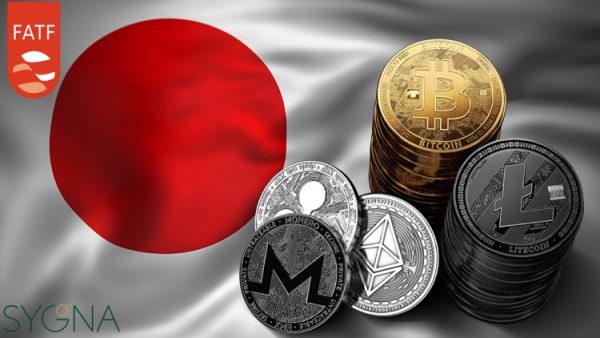This detailed MiCA guide gives an in-depth overview of the European Commission’s proposed Markets in Crypto-assets regulation for EU crypto-assets and their service providers, with a July 2022 update following the most recent approved proposals.
-Written by Werner Vermaak
Table of Contents
July 2022 Update: Provisional Agreement on MiCA Reached
1. Summary
2. MiCA: Essential Overview
2.1 What is the EU’s Digital Finance Package?
2.2 What is the Markets in Crypto-assets regulation (MiCA)?
2.3 Where will MiCA be applicable?
2.4 Who is MiCA for and why?
2.5 What are MiCA’s objectives?
2. 6 When will MiCA come into effect?
2.7 How can MiCA benefit the EU crypto-asset industry?
3. Key MiCA crypto-asset definitions
– What is a CASP?
4. Inside MiCA: Section by Section
4.1 Background and scope (Title I)
– Which crypto-assets will be regulated?
– Which crypto-asset services are out of scope?
4.2 Selling and promoting crypto-assets (Title II)
4.3 Asset-referenced and e-money tokens (Titles III and IV)
5. MiCA and Crypto-asset Service Providers (Title V)
6. Title VI: Prevention of market abuse (Title VI)
7. Additional Q & A
– MiCA and the FATF Standards
– MiCA vs the DeFi and DEX crypto markets
– Does MiCA apply to non-EU crypto-asset companies?
– Difference between a CASP and VASP
8. Conclusion
July 2022 Update*: EU Reaches Provisional Deal on MiCA
In late June, European Union officials finally agreed on a provisional version of the Markets in Crypto Assets (MiCA) framework, which will be the most substantial piece of crypto regulation yet when it comes into effect.
As the world’s third-largest economy, the regulatory choices of the EU are likely to have a heavy influence elsewhere. One area of intense focus in MiCA has turned out to be stablecoins, while other areas such as decentralized finance (DeFi) and non-fungible tokens (NFTs) have been largely left alone for now.
The agreement, the full text of which is unreleased, still must be approved by the EU Council and Parliament. Following that, there will be a grace period before it enters into force in 2024.
Let’s take a look at where MiCA ended up at the 11th hour and what it might mean for crypto.
Stablecoins
Probably the area most impacted by MiCA will be stablecoins, as regulators have been catalyzed in their concern by the May 2022 collapse of the algorithmic stablecoin TerraUST and its governance token LUNA, which led to many billions of dollars in losses across the crypto industry.
In a series of tweets, Member of the European Parliament Ernest Urtasun said that stablecoins will have to be backed by reserves that are “fully protected in case of insolvency,” adding that they also must be entirely “segregated and insulated.” As 1:1 backing will be required, this amounts to a ban on algorithmic stablecoins.
Furthermore, there will be a cap of 200 million euros in daily trading volume for stablecoins, which raises questions of viability as market leaders such as Tether (USDT) and USD Coin (USDC) have daily trading volumes of 48.13 billion euros and 5.4 billion euros, respectively.
For stablecoins with over 10 millions users or 5 billion euros worth in circulation, supervision will fall to the European Banking Authority (EBA).
Crypto Asset Service Providers (CASPs)
The European Securities and Markets Authority (ESMA) and the EBA will be in charge of monitoring crypto markets and will have the power to intervene in certain situations. Crypto asset service providers (CASPs) will be required to maintain various investor protections, and regulators will be on the lookout for market manipulation and insider trading.
For assets with no issuer, such as Bitcoin, exchanges will be required to offer a white paper about potential risks, with the possibility of being liable for misleading contents. Liabilities will also fall on CASPs and other wallet custodians in the event of hacks or preventable operational failures.
In addition, CASPs will have to publicize data regarding environmental impact. Previously, a proof-of-work mining ban had been on the table but is no longer.
Anti-money laundering (AML)
In a parallel legislative agreement, the EU will also be moving ahead with the Transfer of Funds Regulation (TFR), which is an anti-money laundering (AML) effort that will see the bloc align itself with the Financial Action Task Force’s Recommendation 16, otherwise known as the Crypto Travel Rule.
Under the TFR, there will be no minimum threshold set for the need to share originator and beneficiary data on funds transfers between exchange accounts. Requirements will also be in place for some transfers from exchange accounts to unhosted wallets, while transfers between unhosted wallets fall outside the scope.
The TFR is expected to proceed along the same legislative timeline as MiCA, with the rules coming into force 18 months after the passage of the laws.
DeFi and NFTs
Decentralized finance (DeFi) and non-fungible tokens (NFTs) are largely left alone by MiCA, with the EU claiming that further legislative packages down the road will tackle the sectors separately. However, NFTs with fractional ownership fall under the law’s remit.
What’s next for MiCA on the road to implementation in 2024?
With the stated aims of harmonizing regulations across the bloc, providing regulatory certainty, and boosting consumer protections, the new MiCA framework seems poised to deliver much of what it sets out to do.
The legislative process is expected to be completed sometime this year, and after that, it will take 18 months to go into effect in 2024. Even at this delayed pace, it will still likely be enforceable sooner than any similar package to come out of the United States, which is still in the exploratory phase of its major crypto regulations.
How MiCA impacts the various blockchain businesses in the EU and whether it fosters or stifles innovation will be watched closely elsewhere as governments around the world hurry to enact their own set of rules for reining in the Wild West days of crypto.
1. MiCA Summary (TL;DR)
“The Future is Digital.”
Valdis Dombrovskis, European Commission Executive Vice-President
On 24 September 2020, the European Commission (EC) adopted an expansive new Digital Finance Package that will transform the European economy in the coming decades.
The package aims to improve competitiveness of the continent’s Fintech sector and technologies, while mitigating risk and ensuring the financial stability of the European economy.
Importantly, the new regulatory framework also includes a comprehensive new legislative proposal on crypto-assets, called Markets in Crypto-assets (MiCA), that was developed to help streamline distributed ledger technology (DLT) and virtual asset regulation in the European Union (EU) whilst protecting users and investors.
The 168-page MiCA document focuses strongly on rules to regulate currently out-of-scope crypto-asset types such as stablecoins as well as crypto-asset service providers, referred to as CASPs ( a term also used in other countries’ regulatory frameworks, such as Japan and South Africa).
For example, stablecoin issuers and CASPs whose market volumes exceed “significant” thresholds will be subject to obligations like a whitepaper as well as strict due diligence requirements.
The EC claims that it has tried to be fair “where possible” and that “the requirements imposed on crypto asset service providers are proportionate to the risks created by the services provided.”
The MiCA proposal was “leaked” mid-September, enabling the crypto industry to ready itself, and is mooted to take up to 4 years to be formally adopted in EU legislation.
Despite this lengthy timeline, MiCA will without a doubt permanently alter the digital asset landscape in Europe, and its stringent compliance requirements for companies could pose an existential threat to crypto niche markets like decentralized finance (DeFI).
For the purposes of this article we will focus on explaining MiCA, its requirements, and its expected impact on the crypto sphere in coming years.
2. MiCA: Essential Overview
2.1 What is the EC’s Digital Finance Package?
The European Commission’s new Digital Finance package was developed after extensive public consultations and outreach, and comprises digital finance and retail strategy as well as legislative proposals on crypto-assets (MiCA) and digital resilience.
The Digital Finance package aims to ensure that the European Union’s financial sector remains competitive as it gives consumers access to more innovative products, whilst keeping consumer protection and financial stability intact. By simplifying the rules and emphasising consumer safety, the EC hopes to leverage synergy between highly innovative startups and more established firms.
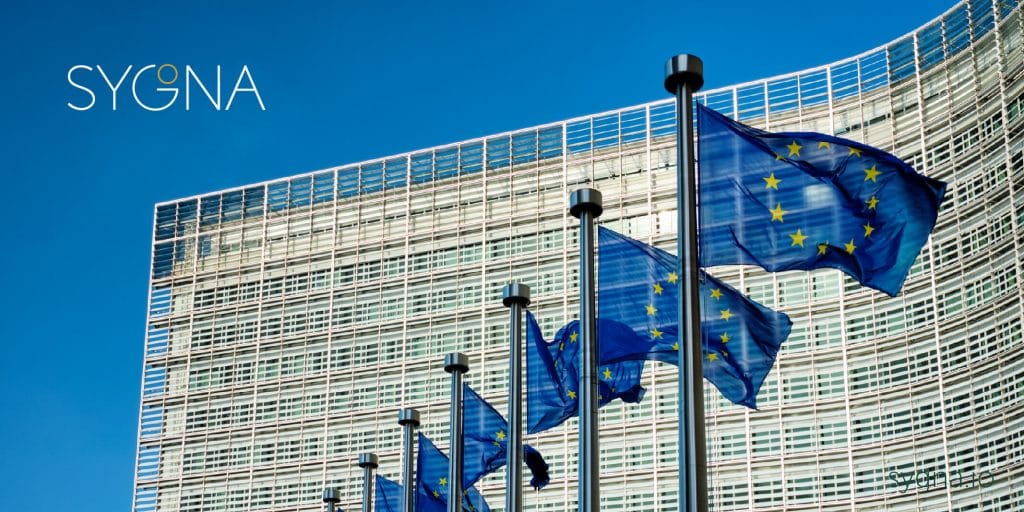
2.2 What is the Markets in Crypto-assets (MiCA) Proposal?
The European Commission’s Regulation of Markets in Crypto-assets (MiCA) proposal is a regulatory framework developed since 2018 to help regulate currently out-of-scope crypto-assets and their service providers in the EU and provide a single licensing regime across all member states by 2024.
MiCA aims to “harmonise the European framework for the issuance and trading of various types of crypto token as part of Europe’s Digital Finance Strategy”.
Official Title: Proposal for a REGULATION OF THE EUROPEAN PARLIAMENT AND OF THE COUNCIL on Markets in Crypto-assets, and amending Directive (EU) 2019/1937
2.3 Where will MiCA be applied?
MiCA will be applicable across the European Union (EU) to all member states once it is adopted. It proposes a legal framework for assets, markets, and service providers that are currently not regulated on an EU-level and makes it possible to provide licensed services across the EU.
If adopted, the regulation will directly apply to all Member States, however, implementation in national law will not be required.
It will also affect any firm seeking to do business in the EU; client prospecting from outside the EU, say from Singapore for example will be a regulated activity.
2.4 Why and for who was MiCA developed?
The European Commission created MiCA to ensure EU consumers get access to innovative yet safe crypto-assets without compromising market stability. Arguably, the protection of crypto users is its main concern, which has to be balanced against the need for more cutting-edge investment products as well as the regulatory and financial risks that come with wider use of potentially dangerous assets like stablecoins.
MiCA is the fruits of a process that started in early 2018, following the bull run of Bitcoin in 2017. This groundswell of public interest and investment in cryptocurrencies caused European regulators to take note of the dangers that unregulated virtual assets posed to investors and markets, which includes money laundering and terrorism funding risks.
The EC’s FinTech Action plan, published in March 2018, mandated the European Banking Authority (EBA) and European Securities and Markets Authority (ESMA) to review how suitable and applicable the existing EU financial services regulatory framework were to crypto-assets.
It was found that most crypto-assets were out of scope of the EU’s financial services legislation and therefore not subject to provisions on consumer and investor protection and market integrity. As a result, European regulators started working on a new regulatory crypto-asset framework, which became MiCA, under the Digital Finance Package.
2.5 What are MiCA’s regulatory objectives?
The Markets in Crypto-assets proposal has 4 broad objectives:
- To provide legal certainty for crypto-assets not covered by existing EU financial services legislation, for which there is currently a clear need.
- To establish uniform rules for crypto-asset service providers and issuers at EU level
- To replace existing national frameworks applicable to crypto-assets not covered by existing EU financial services legislation
- to establish specific rules for so-called ‘stablecoins’, including when these are e-money.
2.6 When will MiCA be implemented?
Although there is a timeframe to put any proposed legislation through the complex EU process before it can become law, there is no specific timeline for MiCA’s implementation, but the EC’s expectation is that it will happen within the next four years.
“By 2024, the EU should put in place a comprehensive framework enabling the uptake of distributed ledger technology (DLT) and crypto-assets in the financial sector… It should also address the risks associated with these technologies.”
2.7 How can MiCA benefit the EU crypto-asset industry?
The EC’s proposal draws attention to cryptoasset companies’ inability to enjoy the benefits of Europe’s internal market for financial services due to a “lack of both legal certainty about the regulatory treatment of crypto-assets as well as the absence of a dedicated and coherent regulatory and supervisory regime at EU level. ” This is illustrated by the current inability for crypto firms to “passport” their licensing across the EU the way it is done in traditional financial services.
In addition, in most Member States CASPs do business outside regulatory regimes, which is forcing the hand of these governments to develop customized national frameworks to regulate these businesses.
These different frameworks, regulations and definitions of both cryptocurrency assets and their service providers are currently stifling the development of these companies and their ability to scale their operations at EU level, due to high costs, legal complexity and regulatory uncertainty.
All this results in an “uneven playing field” for CASPs based on their member state, which ultimately impacts the efficiency of the internal market. Due to the lack of a common EU framework, both CASPs and their customers are currently at substantial risk when dealing with crypto-assets. The EC hopes to remedy this situation with MiCA.
3. MiCA’s Key Crypto-Asset Definitions
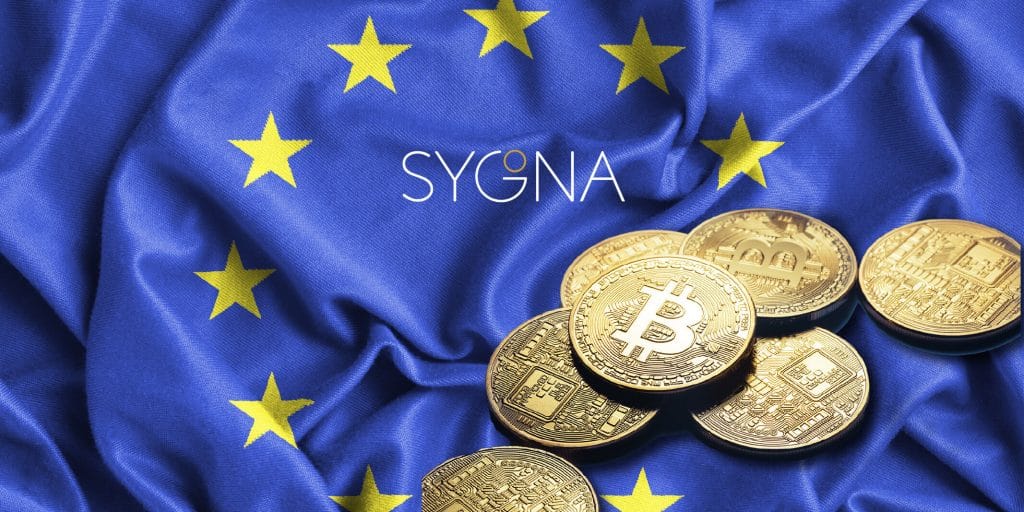
The MiCA proposal introduces 28 cryptoasset-related definitions. Here are the most important ones:
| “crypto-assets” | a digital representation of value or rights which may be transferred and stored electronically, using distributed ledger technology or similar technology. |
| “distributed ledger technology” ( “DLT”) | a type of technology that supports the distributed recording of encrypted data |
| “utility token” | type of crypto-asset which is intended to provide digital access to a good or service, available on DLT, and is only accepted by the issuer of that token” |
| “asset-referenced token” | a type of crypto-asset that purports to maintain a stable value by referring to the value of several fiat currencies that are legal tender, one or several commodities or one or several crypto-assets, or a combination of such assets. |
| “electronic money token” (“e-money token”) | a type of crypto-asset the main purpose of which is to be used as a means of exchange and that purports to maintain a stable value by referring to the value of a fiat currency that is legal tender. |
| “crypto-asset service provider” | any person whose occupation or business is the provision of one or more crypto-asset services to third parties on a professional basis |
How does MiCA define crypto-asset services and their providers (CASPs)?
“‘Crypto-asset service’ means any of the services and activities listed below relating to any crypto-asset:
(a) the custody and administration of crypto-assets on behalf of third parties;
(b) the operation of a trading platform for crypto-assets;
(c) the exchange of crypto-assets for fiat currency that is legal tender;
(d) the exchange of crypto-assets for other crypto-assets;
(e) the execution of orders for crypto-assets on behalf of third parties;
(f) placing of crypto-assets;
(g) the reception and transmission of orders for crypto-assets on behalf of third parties;
(h) providing advice on crypto-assets
As mentioned previously, a “Crypto-asset Service Provider” (CASP) is defined under MiCA as “any person whose occupation or business is the provision of one or more crypto-asset services to third parties on a professional basis.”
This definition is broader than the FATF’s virtual asset service provider (VASP) definition, in order to ensure MiCA applies to most crypto companies and to future-proof it against market niches that don’t exist yet.
4. Inside MiCA: Section by Section
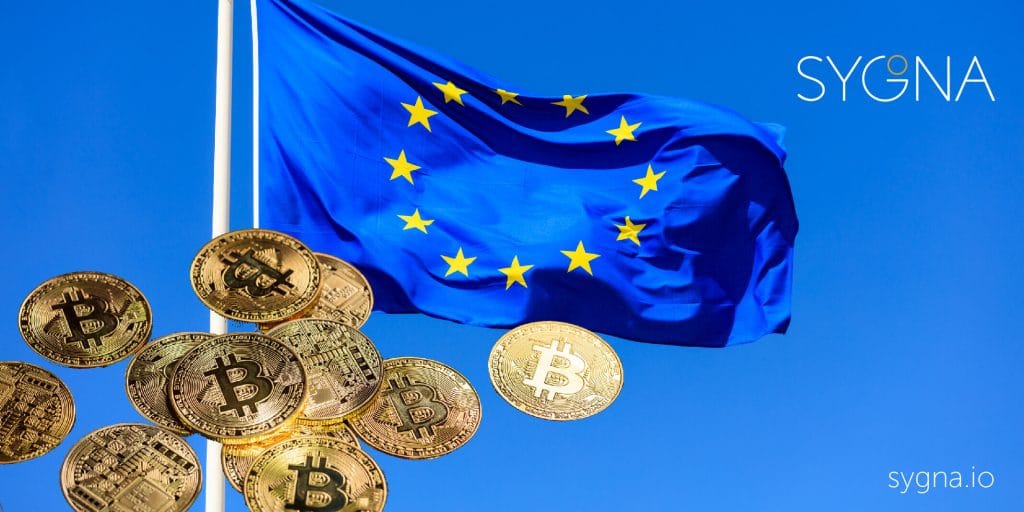
The proposed Regulation is divided into nine Titles. For the purposes of this article,we’ll only cover titles 1 to 6. Please refer to the original proposal where necessary:
| Title I | Subject matter, the scope and the definitions. |
| Title II | Offerings and marketing to the public of crypto-assets other than asset-referenced tokens and e-money tokens. |
| Title III | Asset-referenced tokens (stablecoins) |
| Title IV | Authorisation as an issuer of e-money tokens |
| Title V | Authorisation and operating conditions of crypto-asset service providers |
| Title VI | Prevention of market abuse involving crypto-assets |
| Title VII | Powers of national competent authorities, the EBA and ESMA |
| Title VIII | Exercise of the delegation with a view to adopt Commission’s delegated acts |
| Title IX | Transitional and final provisions |
4.1 Scope of crypto-asset regulation (Title I)
Which crypto-assets are to be regulated by MiCA?
The Markets in Crypto-assets proposal aims to regulate every digital representation of value or rights, which may be shared or stored electronically, using distributed ledger technology (DLT) or similar.
Crypto-assets already defined as financial instruments or electronic money (e-money) under the Markets in Financial Instruments Directive (MiFID) and the Electronic Money Directive (EMD) are out of scope for MiCA. MiCA will also replace existing national frameworks for cryptoassets that are not covered by existing EU financial services legislation
MiCA aims to regulate crypto-assets not covered as financial instruments by the 2nd Markets in Financial Instruments Directive (MiFID II). Whether or not it is applicable depends on the content of an instrument and not on the technology that is used to issue it (‘substance over form’).
MICA will therefore regulate these 3 subcategories of crypto-assets:
| MiCA’s 3 Crypto-asset types |
|---|
| 1. Utility tokens which are issued with non-financial purposes to digitally provide access to an application, services or resources available on DLT networks. |
| 2. “Asset-referenced tokens” that aim to maintain a stable value by “referencing several currencies that are legal tender, one or several commodities, one or several crypto-assets, or a basket of such assets.” and subsequently act as a means of payment to buy goods and services and as a store of value. |
| 3. “e-money tokens”: crypto-assets with a stable value based on only one fiat currency that aims to function similar to electronic money (replacing fiat currency in payments), as defined in the EU”s Directive 2009/110/EC. |
Which crypto-asset services won’t be regulated by MiCA?
MiCA will NOT apply to crypto-assets that qualify as:
- financial instruments (as defined in Article 4(1), point (15), of Directive 2014/65/EU);
- electronic money (as defined in Article 2, point (2), of Directive 2009/110/EC, except where they qualify as electronic money tokens under this Regulation);
- deposits (as defined in Article 2(1), point (3), of Directive 2014/49/EU of the European Parliament and of the Council 49);
- structured deposits (as defined in Article 4(1), point (43), of Directive 2014/65/EU;
- securitisation (as defined in Article 2, point (1), of Regulation (EU) 2017/2402 of the European Parliament and of the Council 50).
MiCA will not apply to these persons and entities:
- the European Central Bank and Member State national central banks acting as monetary or other public authorities;
- insurance undertakings or undertakings carrying out the reinsurance and retrocession activities (as defined in Directive 2009/138/EC of the European Parliament)
- a liquidator or administrator acting in insolvency procedure, except for the purpose of Article 42;
- persons who provide crypto-asset services exclusively for their parent companies, for their subsidiaries or for other subsidiaries of their parent companies;
- the European investment bank;
- the European Financial Stability Facility and the European Stability Mechanism;
- public international organisations
4.2 Selling and promoting crypto-assets (Title II)
Just as their traditional finance counterparts need to issue a prospectus in order to securities to the public, issuers of all MiCA crypto-assets will be required to first publish a whitepaper (in English or an EU state’s official language) which must contain the core information on the characteristics, rights and obligations, and underlying technology and project.
The whitepaper must be shared with authorities at least 20 days before publication and is not subject to approval. Once published on the issuer’s website, it can be marketed throughout the whole European Economic Area (EEA).
No whitepaper needs to be published if the offering:
- targets only qualified investors or less than 150 investors per member state
- doesn’t exceed 1 million Euros (USD 1.17m) over 12 months
- gives free crypto-assets, in other words “airdrops” (unless recipients have to provide personal data or the issuer earns commission or benefits from other parties)
- issues mining rewards
- issues crypto-assets already previously available in the EU (excluding stablecoins)
Member states must also ensure that crypto-asset issuers will be liable under their national laws for their whitepaper information. Consumers will have a 14-day right to withdraw from purchasing a non-listed crypto-asset token if they bought it directly.
Finally, due to the complexity of DLT security and risks, issuers must ensure they have strong cybersecurity in place to safeguard investors’ funds. If they don’t, national authorities may suspend their offering.
4.3 Asset-referenced token and e-money stablecoins (Titles III and IV)
So-called “stablecoins” are a central focus of MiCA. While the EC considers the crypto market still relatively small (“modest”), it is wary of possible “global stablecoins” (cue Libra and successors) that could disturb the financial stability of the European markets. The extensive regulation proposed for stablecoins falls largely outside the scope of this article.
MiCA does not define stablecoins but covers two kinds that are “often described as stablecoin” (page 11) and are meant for exchange or payment purposes. As covered in title 1, they are asset-referenced tokens and e-money tokens.
How do asset-referenced and e-money tokens differ?
Asset-referenced tokens refer to several fiat currencies, one or several commodities or one or several crypto-assets, or a combination of such assets (the so called “reserve assets”). E-money tokens refer to one single fiat currency only.
A very important distinction here will be whether the European Banking Authority (EBA) considers a stablecoin to be “significant”, based on specific requirements.
MiCA proposes a “bespoke” framework to regulate “significant” stablecoin issuers, and will force them to comply with stronger capital, investor and EBA supervisory requirements. This includes rules and further requirements on governance, conflicts of interest, reserve assets, custody, investment and the accompanying whitepaper.
5. Authorization of Crypto-asset Service Providers (CASPs; Title V)
MiCA will apply to a group of crypto-asset service providers (CASPs) and issuers of crypto-assets who offer these assets to third parties. More stringent additional requirements will be imposed on issuers of asset-referenced tokens and e-money tokens.
Specifically, Title V’s several chapters and articles set out the provisions on authorization and operating conditions of CASPs.
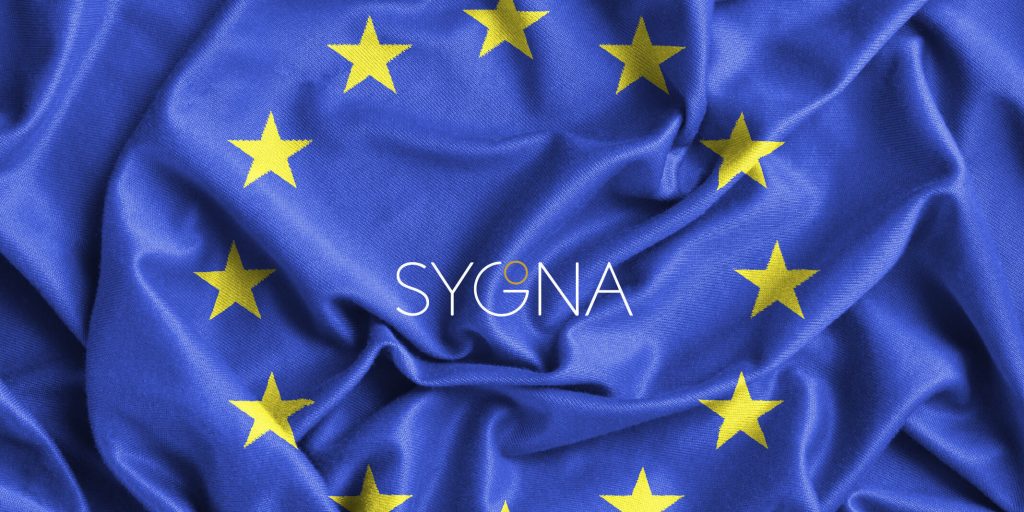
Chapter 1: Sets out scope and details of authorization
- Article 53: defines the provisions on authorization
- Article 54: details the content of such an application
- Article 55: the assessment of the application
- Article 56: right to withdraw authorisation by authorities
- Article 57: mandate for ESMA to create a CASP register
- Article 58: reporting of cross-border crypto activities
Chapter 2: Sets out requirements on all crypto-asset service providers
- Article 59: obligation to act honestly, fairly and professionally
- Article 60: prudential safeguards
- Article 61: organisational requirements
- Article 62: rules on the safekeeping of clients’ crypto-assets and funds
- Article 63: the obligation to establish a complaint handling procedure
- Article 65: rules on conflict of interests
- Article 66: rules on outsourcing
Chapter 3 sets out requirements for specific services:
- Article 67: custody of crypto-assets,
- Article 68: trading platforms for crypto-assets
- Article 69: exchange of crypto-assets for fiat currency or for other crypto-assets
- Article 70: execution of orders
- Article 71: placing of crypto-assets
- Article 72: reception and transmission of orders on behalf of third parties
- Article 73: advice on crypto-assets
Chapter 4 details the rules governing the acquisition of crypto-assets service providers.
1 CASP authorization and EU passport
In order to provide crypto-asset services, companies will need to receive prior authorization from competent member state governments, which will be valid across the European Union. Credit institutions and companies whose services are already authorized by MiFiD as financial services are conveniently excluded from this requirement.
Where an EU country has already established a bespoke licensing regime for CASPs, regulators will apply a simplified authorization process to help companies transition from a national license to a MiCA CASP license that is valid across the whole European Union.
2. Additional regulatory criteria
Similar to MIFID requirements, CASPs will be subjected (depending on their size and associated risk) to further requirements which pertain to their capital requirements, governance model, staff training, insurance coverage and more.
The protection of investors remain a focal point, and therefore further obligations on adequate asset separation, safekeeping of funds, business structure and management qualification will need to be met.
Who can operate a crypto-asset service provider?
Crypto-asset services within the EU can only be provided by legal persons that have a registered office in a Member State of the EU and that have been authorized as Service Providers under MiCA in accordance with Article 55.
CASPs that offer cross-border services don’t need to have a physical presence in all the Member States where they wish to provide services, other than their Home Member State.
Legal persons that intend to provide crypto-asset services need to apply for authorisation as a Service Provider with the Competent Authority of the Member State where they have their registered office.
More details should be released once MiCA is further developed and the implementation process begins, but it is expected that the Competent Authorities will assess whether an authorization application is complete within 25 days, and is accepted within 90 days of receipt.
5.3 Requirements on crypto-asset services
MiCA puts in place strong capital and other requirements that need to be met in order for service providers to offer specific crypto asset services.
| Crypto-asset Service Requirements | ||
| CASP type | Capital Required | Other requirements |
| Custody and administration of crypto-assets | € 125,000 | The crypto custodian must keep its customers’ crypto-assets on DLT addresses that are separate from its own addresses. Crypto custodians must file quarterly reports on the crypto-asset positions they hold for each client.Customers may hold their crypto-asset custodian liable for losses that result from hacks or malfunctions. |
| Crypto trading platforms [Multilateral trading facilities/ Organized trading facilities (MFT/OFT)] | € 150,000 | Must set rules on admitting and suspending crypto-assets sent or received by platform. MFT trading can be accessed by retail clients Privacy tokens that deter user identification and transaction history are prohibited. Operators may not trade on their platform with their own accounts.Platform must continuously publish bid and ask prices as well as transaction volumesTransactions must be settled on DLT on the day they happen |
| Exchange against fiat currency or other crypto-assets (dealing on own account) | € 150,000 | Exchange operators must publish: their policy on client types acceptedfirm prices offered or pricing mechanismdata (price and volumes) on transactions executed on their exchange platform |
| Execution of crypto-asset orders | € 50,000 | Service providers are obligated to use policies and steps that will ensure the best possible outcome for executed client orders. |
| Placement of crypto-assets | € 50,000 | CASPs must clearly explain transaction costs and fees and inform the client on the proposed timing, procedure and price for the crypto-assets being placed. |
| Receiving and transmitting crypto-asset orders | € 50,000 | When transmitting clients’ orders, CASPs are not allowed to accept any type of payment or benefits for routing client orders to a particular crypto-asset trading platform |
| Advice on crypto-assets | € 50,000 | Crypto investment advisors must gather relevant information from customers and assess their crypto-asset investment knowledge and experience. Advice given must be weighed against this assessment and include a clear explanation and warning of investment risks. |
6. Prevention of market abuse (Title VI)
Title VI puts in place prohibitions and requirements to prevent market abuse involving crypto-assets.
All crypto-assets greenlit for trading on an exchange platform will be subject to regulatory measures that aim to combat rampant market abuse long associated with crypto exchanges.
These measures expressly prohibit fraudulent behavior as follows:
- Article 76 defines the scope of market abuse rules.
- Article 77 defines inside information and signals that an issuer whose crypto-assets are admitted to trading on a trading platform shall disclose inside information.
- Article 78 covers insider dealing.
- Article 79 deals with unlawful disclosure of inside information
- Article 80 prohibits market manipulation.
Where these regulations are violated, competent authorities may impose monetary sanctions limited to EUR 5,000,000 or 3% of annual turnover on legal persons, or EUR 700,000 on natural persons. This is separate from national law sanctions, which remain in place.
7. MiCA Additional Q&A
1. MiCA and the FATF Standards
MiCA does not directly address anti-money laundering (AML) and Combating Financing of Terrorism (CFT) risks, however the proposal has been designed to further harmonize EU legislation with the Financial Action Task Force (FATF)’s 40 Recommendations by aligning its terminology and scope of service to a certain extent.
MiCA’s Consideration 8 succinctly phrases this overarching objective:
Any legislation adopted in the field of crypto-assets should be specific, future-proof and be able to keep pace with innovation and technological developments. ‘Cryptoassets’ and ‘distributed ledger technology’ should therefore be defined as widely as possible to capture all types of crypto-assets which currently fall outside the scope of Union legislation on financial services.
Such legislation should also contribute to the objective of combating money laundering and the financing of terrorism. Any definition of ‘crypto-assets’ should therefore correspond to the definition of ‘virtual assets’ set out in the recommendations of the Financial Action Task Force (FATF)34 . For the same reason, any list of crypto-asset services should also encompass virtual asset services that are likely to raise money-laundering concerns and that are identified as such by the FATF.
2. MiCA vs DeFi
Much of the crypto markets’ growth in 2020 can be attributed to the exponential rise in popularity of decentralized finance, or DeFi. For many, the nascent crypto sector raised red flags due to its high price volatility, blatant market manipulation and money laundering, which has left many retail investors shortchanged.
As a result, it’s no surprise that DeFi is increasingly finding itself in the crosshairs of regulators. The EU is no different and there are early reports that MiCA pose an existential threat to the DeFi industry.
It is likely that by the time MiCA is enforced, which is not for several years, the DeFi landscape will have drastically changed, much as the ICO landscape changed rapidly after an initial boom.
A requirement for legal presence is not a gray zone, yet it will be quite clear what is required of DeFi projects to operate in the EU or seek out EU customers.
DeFi projects by then will fall into one of two categories, regulated and unregulated. If the EU environment is more punitive than other jurisdictions it is likely to result in regulatory arbitrage. What remains unclear is whether the rest of the world will align itself with this framework.
3. MiCA vs non-EU CASPs
The proposed regulations will be applicable to any non-European CASP seeking to market to EU clients. Among the requirements will be a need for a legal entity in an EU country and a license, but there are other potential requirements such as additional licensing for what is deemed to be advisory functions, depending on the type of activity undertaken. This is not a framework that only affects the EU, it will have global repercussions.
4. How does a CASP differ from a VASP?
In 2019 the Financial Action Task Force (FATF) introduced strict new regulations, most notably the FATF travel rule, for virtual asset service providers (VASPs) that have to be implemented by its 200+ member network, which includes the European Union.
MiCA’s CASP definition has some similarities to the FATF’s VASP definition, but is broader in scope to ensure it covers more entities.
CASP (a) the custody and administration of crypto-assets on behalf of third parties; (b) the operation of a trading platform for crypto-assets; (c) the exchange of crypto-assets for fiat currency that is legal tender; (d) the exchange of crypto-assets for other crypto-assets; (e) the execution of orders for crypto-assets on behalf of third parties; (f) placing of crypto-assets; (g) the reception and transmission of orders for crypto-assets on behalf of third parties (h) providing advice on crypto-assets; | VASP i. exchange between virtual assets and fiat currencies; ii. exchange between one or more forms of virtual assets; iii. transfer of virtual assets; iv. safekeeping and/or administration of virtual assets or instruments enabling control over virtual assets; and v. participation in and provision of financial services related to an issuer’s offer and/or sale of a virtual asset. |
5. How will MiCA benefit CASPs, investors and regulators?
Benefits for crypto-asset service providers
European crypto-asset service providers and investors have long suffered under fragmented and convoluted regulations that differed vastly from EU member state to member state.
While MiCA will undoubtedly make it tougher for CASPs to do business, it should also bring an end to these fragmented national legislative regimes and provide a clear regulatory structure for CASPs under which to operate.
Critically, MiCA will simplify the licensing process for service providers by extending home member state licensing across the EU to all member states, thereby saving CASPs considerable time, cost and manpower.
Benefits for crypto-asset investors
MiCA has at its core the protection of crypto-asset investors, who have long been neglected victims of rampant market abuse, scams and hacks, and this should attract new investors.
Benefits for national authorities and regulators
MiCA provides a clear framework to develop crypto-asset policies that will help harmonize the EU market and stem regulatory fragmentation. MiCA’s status as a proposed EU Regulation instead of a Directive (e.g. the 5th Anti-Money Laundering Directive, also known as AMLD5), which makes transposition discretionary as opposed to immediately enforceable, makes it clear to EU state regulators that there will be no escaping its requirements once it is officially promulgated.
8. Conclusion
As such, it is likely that MiCA’s official enforcement by 2024 will spell an end to all EU member states’ national crypto policies, in favor of a single, focused regulatory framework that should allow EU crypto-asset service providers to operate with greater ease across all EU markets, albeit under stricter rules.
Then again, who knows what the crypto-asset market will look like in 2024?
Rapid advances in both DLT and crypto-asset technology, which has led in 2020 to the advent of new fields such as decentralized finance (DeFi) and decentralized exchanges, have necessitated even stronger dialogue between regulators and CASPs globally.
With comprehensive regulatory crypto reforms expected to be rolled out across all FATF members in response to its updated Standards, MiCA might seem quite meek and par for the course by the time it finally dawns over the European Union in a few years from now.
Written by Werner Vermaak
Disclaimer: CoolBitX provides these blog posts for general educational purposes only. Information on this blog expresses the opinion of the author only. It does not constitute professional legal or financial advice and should not be considered as such. The author or company may update the information on this article at any time without prior notice and do not guarantee the work to be up to date and accurate. To the best of our knowledge, the information provided here is factual at the time of writing.
About Sygna Bridge
Sygna Bridge is a simple FATF Travel Rule API messaging network solution developed by CoolBitX to help VASPs share compliance-required transaction information with counterparts securely and with flexible privacy.
In September 2020 CoolBitX conducted the first interoperability proof of concept with CipherTrace’s TRISA solution using the IVMS101 messaging standard.
With over 20 MoUs signed with VASPs on 5 continents, and a strategic partner in blockchain analytics pioneer Elliptic, Sygna Bridge is the right choice to help your crypto-asset service provider comply with the FATF’s Travel Rule and other AML regulations to you get licensed in jurisdictions worldwide.
To learn more or request a demo, please contact services@sygna.io.

